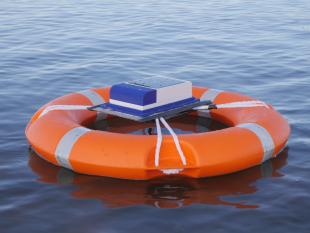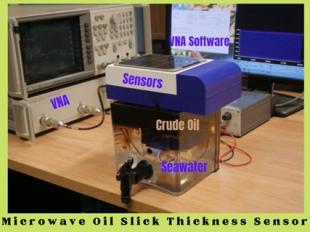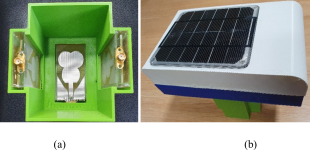One of the most challenging region of the planet to monitor is the underwater environment. Interestingly, Earth is a water planet with about 71 percent of its surface covered in water. Very vital resources abound the deep oceans such as marine life, oil and gas installations. Sometimes, accidents happen underwater with dire repercussions. In December of 2011, an oil spill occurred at the Bonga deep-water oil fields. Almost 2 million gallons of crude oil poured into the Atlantic Ocean, covering a distance of 185 km, killing marine lives and affecting no fewer than 1.5 million people and 350 coastal communities. About a year earlier, the worst oil spillage in US history, the Deepwater Horizon oil spillage, resulted in over 130 million gallons of oil discharged into the Gulf of Mexico.
Several techniques have been used in sensing and monitoring the seas and oceans for oil spillage. One of the most popular method is the use of synthetic aperture radar (SAR) mounted on satellites to collect the information on the water surface. The data captured is analysed for possible oil spills. One of the demerits of this approach is that it has high latency, thus unfit for instances were real-time capabilities are required. It is also prone to falsely detecting the presence of oil spill or positively detecting other areas where no oil spill had occurred. Another limitation of remote sensing techniques is their inability to precisely measure oil slick thickness. The oil slick thickness could determine the amount of oil discharged into the ocean during the oil spillage, therefore guiding oil spill countermeasures and legal cases. For this purpose, the in situ methods are more reliable. Several techniques based on optical waves, capacitive and conductive sensing have been used. They all suffer from some limitations such as corrosion and blockage when they come in contact with the water medium. This work proposes the use of microwave sensing techniques for the first time in the detection of oil spill and the determination of oil slick thickness in seawater and freshwater. The novel sensor was able to detect when crude oil inclusions have been discharged into the water medium. A communication backbone was developed in the research to enable the sensor to wirelessly transmit the data obtained to the Internet for real-time monitoring.
The main objectives of this research are:
- To investigate the use of remote and in situ techniques for the detection of oil spill and determination of oil slick thickness.
- To investigate the propagation of electromagnetic waves in water medium and the dielectric properties of water.
- To investigate antennas for underwater microwave communication and sensing.
- To validate oil spill detection prototype in determining crude oil inclusion in unadulterated water.
- To develop a water surface LoRa communication backbone for oil spill sensor’s real-time capability.
- To develop RF switching circuit to be integrated with the proposed antenna-sensor array.
- To implement and evaluate antenna-sensor array for the measurement of oil slick thickness.
Recent Publications:
- Dala, A.; Arslan, T. Design, Implementation, and Measurement Procedure of Underwater and Water Surface Antenna for LoRa Communication. Sensors 2021, 21, 1337. doi: https://doi.org/10.3390/s21041337
- A. Dala, T. Arslan and I. Saied, "Design of a Triangular Slotted Parasitic Yagi-Uda Antenna for Underwater Linear Sensor Network," 2019 Conference on Microwave Techniques (COMITE), 2019, pp. 1-4, doi: 10.1109/COMITE.2019.8733431.
- A. Dala, A. Adetomi, G. Enemali and T. Arslan, "RR4DSN: Reconfigurable Receiver for Deepwater Sensor Nodes," 2018 NASA/ESA Conference on Adaptive Hardware and Systems (AHS), 2018, pp. 280-284, doi: 10.1109/AHS.2018.8541455.
- A. B. Dala, M. S. R. Bashri and T. Arslan, "Investigation into the properties of the north seawater for radio frequency propagation," The Loughborough Antennas & Propagation Conference (LAPC 2018), 2018, pp. 1-5 doi: .10.1049/cp.2018.1680




